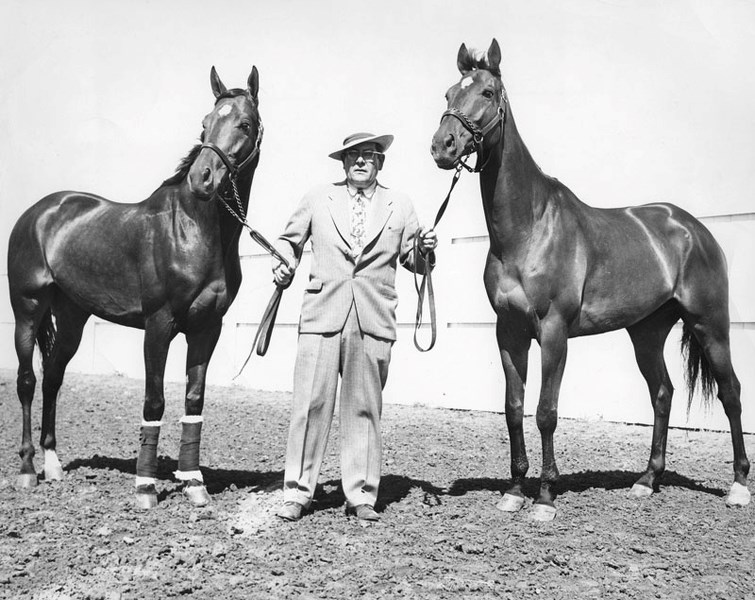When Albertans think of ranching, they probably think of the cattle industry in the south. When they think of horseracing, they probably think of Northlands and other rodeo grounds around the province.
They don’t generally think of Sturgeon County but there was a large operation that accommodated horses and cows alike and became a major player across Canada and the continent. The new exhibit at the MusĂ©e HĂ©ritage Museum is here to take a good close look at that local connection and dispel all of those notions that there was never much for horsing around in these parts.
“A lot of people don’t think about that as being from our area. They always think of that as Calgary and the south. It’s actually a slightly bigger story than St. Albert,” offered curator Joanne White. “It’s really an Alberta story with ranches in various places. Of course, anyone from here who was buying or selling cattle and other livestock – or anyone who was involved in horseracing scene – knew him and dealt with Lee.”
Weiller and Williams Co. Ltd.: Building a Livestock Empire is the unlikely story of how ranching in the west in the early 20th century somehow found a foothold northeast of St. Albert. It takes us through the history of the company started by Swiss-born Henry Weiller and Leland Williams of New York. Lee, as he was called, moved to Alberta in 1911 to start his career in the livestock business at the age of 19. He was surrounded by horses all his life, thanks to his father, and had originally wanted to become a veterinarian. Schooling was too expensive at the time, but he was told that he could get a job in Edmonton so that’s where he went.
The two fellows eventually ended up as partners in a livestock business, with Williams earning himself a solid reputation as a fair and square dealer of cattle.
“In the early days when the west was being settled, honesty was the best policy. It still is, but you don’t seem to find the same feeling of man for his fellow men today as you did then. To me a man’s word should be as good as his bond,” Williams is quoted as saying.
Weiller and Williams Co. Ltd. received its Dominion Charter from the Canadian government in 1925, and from there, they reached for the stars.
“They became actually a really major Canadian company. It actually grew to be a major player in the business,” White continued.
Trading livestock might have been the company’s stock-in-trade so to speak, but Williams always had a passion for horses. As he scraped together money, he purchased horses and got them to the racetracks. At one point, he had 30 thoroughbreds to his name including a few champions such as Frank’s Mistake, winner of the 1948 Alberta Derby, and Sonoma, the first filly to win the Canadian Derby in 1959.
Walking through the exhibit is really like taking a step back in time. There’s a lot of history here and, as such, there’s also a lot to read through and peer at, even listen to. “We have quite a lot of stuff,” White remarked, with nary a hint of underestimating the scope or volume of the material.
The collection also includes an old audio recording of one of the horse races – a fascinating throwback that simply cannot be described in print. You must experience it firsthand. It’s like suddenly going decades back in time.
White ended by saying that there’s a lot of buzz over this exhibit, especially since Lee made a lot of friends and many of them are still around and still remember the man and the good ol’ days.
“People in the business all over this region are involved. They’ve all come in and they’re really thrilled first of all that the general story about livestock is being told but also because they all knew Lee and thought he was a great guy. He was the kind of person that would really give someone a hand up if they were struggling. Everyone has positive feelings about him and thinks that he’s deserving of the focus.”
The exhibit runs until Nov. 20. Call 780-459-1528 or visit www.museeheritage.ca for more information.




